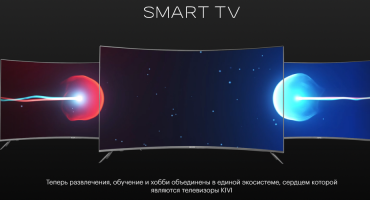There is a TV in every home, but modern devices are equipped with such an extensive range of functions that the selection of a suitable model can cause serious difficulties. In order not to overpay at the time of purchase, we recommend that you familiarize yourself with the main criteria.
Screen diagonal
The size of the TV depends not only on the amount of money that the consumer is willing to spend on the device. The larger the diagonal, the more expensive the device. However, you should focus not only on the cost, but also on the place where the TV will be installed.
- For the kitchen, devices with a diagonal of no more than 32 inches are bought. It will not take up much space on the wall, and will help to have fun while eating, without being too distracted from it.
- For the bedroom, a TV with a diagonal of about 42 inches will fit. If desired, you can install a larger device, but usually in the bedrooms there is not much space for comfortable watching movies and TV shows on the big screen.
- For the living room, you can choose a very large TV so that the whole family can comfortably fit in front of the screen for evening viewing. The minimum diagonal is 42 inches. Not only the financial capabilities of the user are taken into account, but also the distance from which the TV will be watched. The gap between the screen and the viewer should be at least one and a half times the diagonal of the device. Sitting close to the big screen is not worth it. So watching movies is not very convenient, and over time, visual acuity will greatly decrease.
Screen resolution
In budget and obsolete models, the resolution is HD (1280x720). If you buy a TV only for the kitchen or use it exclusively for watching TV shows, such a resolution will be quite enough.
Most modern models have Full HD resolution (1920x1080). The popularity of devices with this resolution is explained by the fact that they are great for watching TV shows, and for movies, and even for games on the console. These devices are relatively inexpensive, and films in Full HD look bright and realistic even on large diagonal screens.
TVs with a resolution of 4K UHD (3840x2160). This is currently the maximum resolution available to consumers. The clarity and contrast of the picture is very high. However, one should not forget that films in this format are usually paid, so those who watch Blu-Ray video, watch paid channels or play advanced games should buy such a TV.
The matrix
Modern TVs use LED, OLED, or QLED matrices. The most popular are budget models equipped with a liquid crystal matrix with LED backlight (LCD LED). These devices are inexpensive, lightweight, have a thin screen, work without fail for a long time and have very decent image quality.
TVs with OLED matrices appeared relatively recently, in 2013. Unlike devices of the previous type, they use organic LEDs that do not need additional illumination. A feature of such screens is high brightness and a wide viewing angle. They are capable of reproducing real black color, and their response time is minimal - only 1 ms. Due to the fact that each pixel has its own separate color and does not take on the shades of neighboring ones, the colors on the screen look very bright.
The most modern are considered devices with QLED matrices. Such devices are presented in the assortment of LG and Samsung.The work of these matrices is based on Quantum Dot crystals (quantum dots). The color gamut of such devices is the highest, but the price can hardly be called budget.
Visually, it is very difficult to determine what type of matrix is installed on the TV. But, if you put alongside a simple budget and premium model, the difference in picture quality will be obvious. Select a TV for this indicator is based on personal feelings. Try not to be persuaded by a sales consultant. All matrices have a long service life, so if you do not need a too bright picture, it makes no sense to overpay for the most modern matrix.
Image enhancement technology
Many modern TV models are equipped with image quality improvement technologies. This indicator is displayed by the abbreviation HDR in the instructions. These technologies make the picture clearer due to built-in software algorithms.
If you buy a TV just for watching regular television channels, there is no point in wasting money on a device with HDR. There will not be much difference. The thing is that a clearer picture can only be seen in content that supports this technology.
Sound quality
Manufacturers try to make TVs as thin as possible. Ideally, they should resemble a picture and almost completely merge with the wall. In such a device, it is physically impossible to place high-quality speakers. For viewing programs and films, the built-in speakers are quite enough. But those who like to completely immerse themselves in the atmosphere of the film will have to additionally purchase a home theater. It consists of a soundbar and several speakers, and provides surround sound.
Some models still support loud and high-quality sound. As a rule, they are equipped with a built-in subwoofer and support Dolby Digital technology. Unfortunately, such devices cannot be hung on the wall, but you will not have to spend money on the purchase of an additional sound system.
Frame refresh rate
From this indicator depends on how quickly the picture will be updated. The same indicator plays an important role in creating a holistic image in dynamic scenes.
Most modern televisions have frame rates ranging from 50 to 240 Hz. In other words, the higher this indicator, the better, but 60 Hz is enough for home use. But for watching sports competitions and games on the console, it is better to choose a device with a minimum indicator of 100 Hz.
3D Availability
If you are not planning to constantly watch films in this format, then buying a TV with this function does not make sense.
If this function is still necessary, 3D technology can be active (shutter) and passive (polarization). In the first case, you will need special glasses with LCD shutters to view. In the second - disposable plastic glasses, such as those that are given in cinemas.
Curved screen
The main practical function of such a screen is the effect of complete immersion, but collective viewing of films on a curved monitor is not too comfortable. Such a display will be much more useful for gamers, and not ordinary users.
Smart tv
A very popular feature of modern TVs, which is really worth paying for. With it, you can watch movies and play music directly from the Internet, as well as download applications and connect various gadgets to the device.
Most modern TVs default to Smart TV. But when choosing a device, attention should be paid to the installed operating system (Android, Linux, webOS, etc.). Each system has its own characteristics, but in most cases they are equipped with a voice assistant, have a built-in online movie theater and a large application store.
Users who believe that Smart TV is just an extra waste of money should be aware that they will have to buy a less functional device for the same amount of money, so it’s better to choose “smart TV” right away.
Interfaces
If you will connect a speaker system or set-top box to the TV, make sure you have the right number of connectors of a certain type in advance. Ideally, the device should be equipped with several HDMI, USB, DVI and audio inputs.
The location of the connectors is very important, although in any case, wires will stick out from the TV, and there will be no way to hide them. It is also advisable to buy a TV with Wi-Fi connection. Then the device will be able to access the Internet wirelessly. This will greatly simplify the broadcast of films or music directly from the Web.
 Electronics Repair: Top 5 Typical TV Failures
Electronics Repair: Top 5 Typical TV Failures 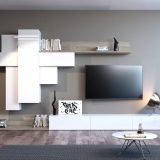 How to successfully fit the TV into the interior
How to successfully fit the TV into the interior 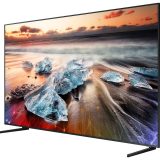 How to choose the right TV for your home
How to choose the right TV for your home 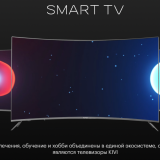 The new line of Smart-TVs from the brand KIVI
The new line of Smart-TVs from the brand KIVI 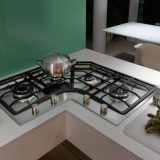 Hob: all about the power of different types of devices
Hob: all about the power of different types of devices 
